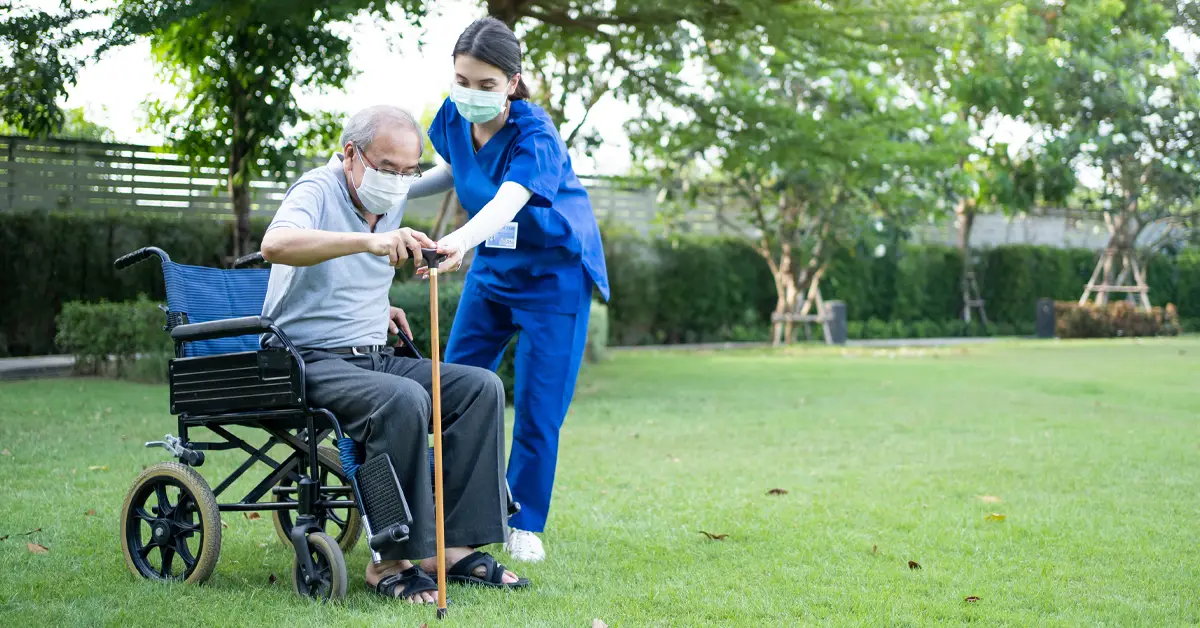Daily management of Parkinson’s Disease can be challenging for many people with the disease. Symptoms of the disease can include tremor, movement disorder, and dementia. While there is currently no cure for Parkinson’s, various treatments are available to help manage symptoms and slow the progression of the disease. People with Parkinson’s Disease should always consult their health care provider when considering treatment options. In the early stages of the disease, medications may be prescribed to help control tremors and other movement disorders. As the disease progresses, there may be additional medications prescribed to address other symptoms such as cognitive decline or memory problems. In later stages of the disease, more aggressive treatments may be considered to slow down further degeneration. Ultimately, effective daily management of Parkinson’s Disease can offer some relief from symptoms and help maintain quality of life for those living with this condition. What follows are 10 tips for the management of Parkinson’s disease that patients, together with their health care providers (HCPs), can consider:
1. Understand the importance of medication management
Medications are essential to Parkinson’s disease management and can help control symptoms and improve a patient’s quality of life. It is important for patients to take their medications as prescribed and communicate regularly with their HCPs about any concerns or changes. Skipping or altering doses can have serious consequences, such as worsening symptoms or increasing the risk of complications.
2. Doing physical fitness and activity
Physical fitness and activity are an important part of a healthy lifestyle. Exercise can help to improve mobility and coordination, which can reduce the number of involuntary movements (dyskinesia) associated with Parkinson’s. Regular physical activity can also help to improve balance, reduce fatigue and build strength.
3. Eating a healthy diet
Maintaining a healthy diet is an important aspect of managing Parkinson’s disease. Nutrients like protein and antioxidants may be particularly beneficial for people with this condition. While there is no one-size-fits-all approach to dietary management of Parkinson’s disease, certain foods and drinks may help alleviate certain symptoms. For example, high fiber foods and plenty of fluids may help alleviate constipation, which is a common issue for people with Parkinson’s disease. It is advisable to work with your HCP or registered dietitian to create a personalized nutrition plan.
4. Address sleep disturbances
Sleep disturbances can significantly impact daily living and quality of life for those with Parkinson’s. It is important for patients to address sleep issues and find ways to improve sleep hygiene, such as establishing a consistent sleep schedule and reducing caffeine intake.
5. Joining social support and communication
Social support and communication are important for managing Parkinson’s disease and can help to improve quality of life. Support groups and connecting with other people with Parkinson’s can be helpful for finding and maintaining a support network.
6. Performing stress management techniques
It is essential to address stress when managing Parkinson’s as it can worsen symptoms. Patients can benefit from implementing stress management techniques like deep breathing, meditation, or counseling. If stress or anxiety are persistent issues, patients should discuss them with their HCPs.
7. Consider treatment options
When considering treatment options, it is important to remember that the diagnosis and treatment should be individualized. There are several treatment options available for managing Parkinson’s disease, including Levodopa treatment, dopamine agonists, monoamine oxidase B (MAO-B) inhibitors, selegiline, deep brain stimulation, and catechol-o-methyltransferase (COMT) inhibitors.
Levodopa treatment is the most common and effective form of treatment for this condition, and it can help reduce symptoms in the early stages of the disease.
MAO-B inhibitors and dopamine agonists can help to improve symptoms in the early stages of Parkinson’s disease, but they can also have side effects including dizziness, sleepiness, dry mouth and hallucinations.
Selegiline is a medication that is used in the treatment of Parkinson’s disease. It works by inhibiting the activity of the enzyme monoamine oxidase B (MAO-B), which is responsible for breaking down dopamine in the brain. By slowing down the activity of this enzyme, selegiline helps to prolong the effectiveness of naturally occurring dopamine and dopamine formed from levodopa. When taken in combination with levodopa, selegiline may enhance the effectiveness of this medication and provide additional symptom relief for individuals with Parkinson’s disease.
Deep brain stimulation involves the implantation of a device that delivers electrical stimulation to specific areas of the brain, and may be helpful in managing symptoms in advanced stages of Parkinson’s disease.
COMT inhibitors can help to increase the effect of levodopa, a medication commonly used in the treatment of Parkinson’s disease, and may be used in combination with levodopa to manage symptoms. It is important to remember that not all treatments work for everyone and that each person’s experience with Parkinson’s disease is unique. Therefore, it is important to consult a doctor to determine which treatments are best suited for your individual needs. Treatment should be tailored to each person’s specific circumstances so that the best possible outcome can be achieved. With proper diagnosis and treatment, people living with Parkinson’s disease can expect improved quality of life.
8. Coordinate with a caring team
Managing Parkinson’s disease is a long-term process that involves multiple healthcare professionals. It is important for patients to have a caring and coordinated team of HCPs to ensure that their needs are met and that they receive the best possible care. HCPs should work together with patients to develop a treatment plan that is tailored to their individual needs and preferences.
9. Participate in clinical trials
Clinical trials can provide patients with access to new and innovative treatment options, and can also help to advance the understanding of Parkinson’s disease.
10. Undergo long-term care and support
Long-term care and support are an important part of managing Parkinson’s disease, which is a progressive neurological disorder that affects movement. People with Parkinson’s require assistance to maintain their quality of life and independence.
Management of Parkinson’s Disease via Remote Patient Monitoring
Remote Patient Monitoring (RPM) can be an effective tool in managing Parkinson’s disease. DrKumo offers RPM solutions that allow HCPs to monitor their patients with Parkinson’s disease remotely using a wearable health device. This technology enables real-time tracking of patients and allows HCPs to intervene promptly if necessary.
By using DrKumo’s highly secure RPM, patients with Parkinson’s disease can manage their condition from the comfort of their homes, and their HCPs can stay far more informed about their health status. DrKumo is committed to innovation, collaboration, and technology to revolutionize access to quality healthcare and provide effective solutions for both patients and HCPs managing Parkinson’s disease.
Takeaways
It is important for individuals with Parkinson’s disease to be proactive in managing their condition and to seek support when needed. Collaborating with healthcare providers and adopting a holistic approach that addresses both physical and emotional well-being can help individuals effectively navigate the challenges of living with the disease and lead fulfilling lives. By following treatment plans, maintaining a healthy diet, and staying informed about the latest management techniques, individuals with Parkinson’s disease can take control of their condition and improve their quality of life.
Do not miss out on the chance to revolutionize your healthcare with DrKumo’s innovative RPM solutions for managing Parkinson’s disease. Contact us now to learn more and start improving your quality of life.
NOTE: The content in this article is not intended to be a substitute for professional medical advice, diagnosis, or treatment. Always seek the advice of your physician or other qualified health provider with any questions you may have regarding a medical condition.








